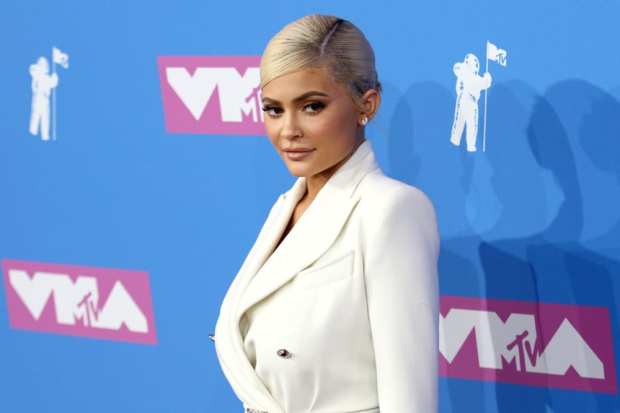Putting A Famous Face To A Product

Celebrity-backed brands are nothing new. As PYMNTS has previously reported, the original celebrity-endorsed products date back as the far as the 1760s, when the British royal family was tapped to endorse fine china.
But the modern era of celebrity brands dates back to 1991, with Elizabeth Taylor’s release of her first perfume line, White Diamonds. That opened the floodgates – and through the 90s and early 2000s, it seemed the number of celebrities who had perfume brands to call their own outnumbered those who didn’t.
And, of course, it’s not just perfume.
In any category, from leggings to tequila to face cream, there is almost certainly someone famous who is driving massive, top-line sales for that brand.
And then there’s Kylie, the first billion-dollar celebrity, made famous for selling lipstick kits on Instagram.
Not everyone fares so well.
Although there was a time in this country when one could buy 17 different Christina Aguilera-themed scents, that historical epoch has sadly passed. There are now only nine ways to smell like the singer.
Why, then, do some celebrity-backed brands go the distance, while others fade away? And why are there so many such brands, despite the fact that so few go the distance? As it turns out, it has a lot to do with the celebrities themselves – and what exactly one means when they say they are “backing a brand.”
Why Do We Buy from Celebrities?
According to psychologist Peter Noel Murray, the reasons consumers look to celebrity brands are both very simple and really complicated. The simple stuff is built mostly around admiration: Celebrities embody a way of life that people want to participate in. Their options for doing so are rather limited, Murray noted, as they are not celebrities – but the products associated with their favorite star carry a peculiar kind of intimacy.
“This transference of deeply held personal values gives these brands the quality of authenticity in the mind of the consumer,” Murray wrote. “Through this connection, consumers not only enjoy the design and features of the brand, they experience the celebrities themselves.”
But not every celebrity is created equal, which is why so many brands have varying degrees of staying power. As Murray pointed out, the basics of branding is licensing a name, and that is only as valuable as long as the name is famous. When a star hits his or her peak of fame, their associated brands usually also hit their peak, sales-wise.
Why do so many of these brands end up being flashes in the pan? Because, let’s face it, many celebrities are also flashes in the pan – very popular for a short time, but ultimately pushed aside for the next new thing in a few years. The brands that bear their name tend to follow suit.
“Their afterlife is a lingering existence in internet auctions and yard sales,” Murray noted.
A chilling epilogue to fame if there ever was one.
But that fate, he said, is not a fait accompli. Some celebrities are iconic enough that their brands don’t really fade, because they are never less famous: Liz Taylor’s perfume is still a big seller, eight years after her death.
But the more likely divider is the firms that produce the products, and the famous person’s actual relationship to that company.
The Celebrity Partner
Often, when we are talking about a celebrity brand, we are technically talking about a collection or offering that another retailer or brand is selling with that celebrity’s name on it. A good example of such a pairing was announced this week, as Drew Barrymore is launching a line of home goods with Walmart. Available for purchase on Walmart.com and Jet.com, the 200-plus items, which are described as “boho-chic,” include a wicker cat bed with pointy ears for $74, a “hand-woven macramé” basket set for $70 and an $899 pink velvet Parisian sofa.
In these cases, the parent brands tout the heavy involvement of a celebrity backer – but the reality is usually quite different. What a celebrity actually does is usually quite vague; nine times out of 10, they do little beyond letting someone put their name on a product.
Quite often, these products or product lines have been nearly created in their entirety before the celebrity is even brought on board. And even when they are there from the start, the involvement might involve a few high-level observations about color palettes, styles or scents early on in the process before the actual work of construction and design is handed off to AI, human experts and focus groups.
That might not be all bad.
When Beyoncé released her Ivy Park athleisure line for sale at Topshop, the store had a hard time keeping the goods on its shelves worldwide. The most popular item was the leotard, despite reports at the time that it might actually be physically unhealthy to wear it. Given that, and the fact that cotton leotards had not exactly been a common piece of workout wear before Queen Bey’s approval, it seems reasonable to assume she was the moon that moved those retail tidal forces.
But it does come with a risk, just like any other celebrity endorsement. “Ultimately, the success of these brands lies in selling the lifestyle of a star. It’s a fantasy – and once a fantasy is ruined, disappointment follows,” one industry insider explained.
If the star is the draw, the star has to be … well, actually still shining.
The Celebrity Founder
Under this umbrella are brands like William Rast, which is marketed as “Nashville meets Hollywood,” specializing in premium denim founded by Justin Timberlake and longtime friend Trace Ayala. Then there is Reese Witherspoon’s Draper James, a “Southern charm-inspired” fashion and accessories line. And Rihanna’s buzz-generating cosmetics firm Fenty and its associate lingerie line Savage (though Fenty is a bit of an outlier; Rihanna is credited as the founder and is listed as the trademark holder on the name and some patents, but LVMH, for all intents and purposes, is the actual owner of the brand). And then there is George Clooney’s recently sold Casamigos tequila brand.
These products tend to have a somewhat longer shelf life, because the celebrity in question often has more than their name and likeness associated with them: They also have some of their own funds in the game.
Casamigos was dreamed up by Clooney and a friend who were on a shared quest to drink tequila all day without hangovers. Realizing no such product existed, he and pal Rande Gerber did what every innovator does when they have a problem the market can’t solve: They introduced a solution to the market.
And they reportedly taste-tested every batch before sending it out.
Not everyone is so involved, but celebrity founders tend to have more day-to-day participation, particularly in marketing, and a good deal more input on creative direction. The brands also have a tendency to gain popularity outside their celebrity connection. Casamigos, for example, eventually sold for $1 billion purely on the merits of its quality as a spirit. George Clooney was not part of the deal.
So, what’s the secret of a great celebrity brand?
It seems it’s not too different than the secret to a great brand in general: Make something that delivers value and that consumers want to buy.
And if that happens to be hangover-free tequila … well, all the better.
